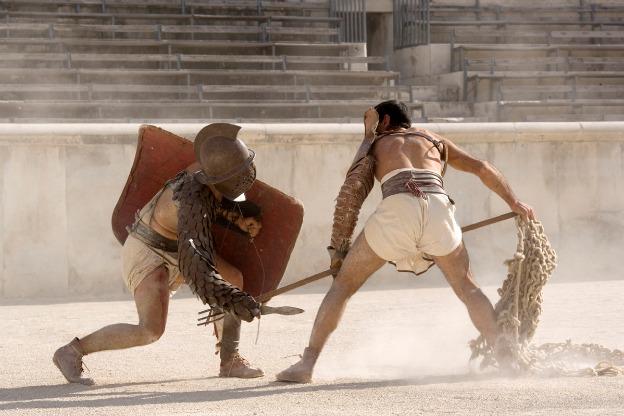In our ongoing series about the Ancient Romans, where we commemorate the 2,000th anniversary of the death of Rome's first emperor, Augustus, celebrated in 2014, Carol King reports on the gladiatorial games of the Ancient Romans.
You can read part one of the series, "The Romans: What They Ate" here; part two, "The Romans: Marriage and Weddings" here; part three, "The Romans: Top 5 Emperors" here; part four, "The Romans: What they Wore" here.
Thanks to Hollywood sword-and-sandal movies like ‘Gladiator’ and ‘Spartacus’, the fact that men fought to the death in Ancient Rome to provide bloody entertainment is remembered and regarded with gruesome fascination. Initially, munera (gladiatorial games) were likely privately financed by aristocratic families as part of funeral rites to honour the deceased. The spilling of blood was seen as an offering owed to the memory of elite men after their death. By the 2nd century BC, the games lost their religious significance and were staged for political purposes by candidates hoping to win votes. The games went on to become official public entertainment put on by emperors. Gladiators were trained in schools run by the state and lived in barracks with their own training areas.
Gladiators were usually prisoners of war, condemned criminals, volunteers or slaves. Some women and dwarves fought as gladiators, too. When a gladiator was wounded, he raised his forefinger to beg the spectators’ mercy. The idea of thumbs up and thumbs down is thought to come from gladiatorial combat, however, the meaning and nature of gestures used at the time is debated by experts. The crowd could respond with the premere pollicem, turning their thumbs down to signify mercy – the gladiator could drop their sword, or perhaps stick the point of the sword into the ground, and the wounded combatant was spared. If the crowd wanted blood and the battle to continue, the crowd gave the vertere pollicem, turning their thumbs towards the chest in a signal for stabbing. There are other accounts that say the infestus pollez, an upturned thumb, signified death, and that the premere involved the thumb pressing on the index finger of a fist. The decision whether to reprieve or slay a defeated gladiator was not up to the audience – the sponsor had the final say as umpire.

"Pollice Verso", a 19th century painting by French artist Jean-Leon Gerome - its historical accuracy is debated.
As gladiatorial games became mass entertainment, gladiators did not always fight to the death because they were not easily expendable. Rather, they were regarded as valuable assets akin to modern-day professional athletes. They were well fed, subjected to rigorous training and given the best medical attention. Different types of gladiators armed with various weapons were introduced and they were then matched as evenly as possible. Usually, adversaries had different fighting styles to provide the most interesting show. The laquearius carried a sword and a noose or lasso to ensnare his adversary. The nimble retiarius was protected with a galerus (shoulder piece) on his left side, and armed with a trident and a net to entangle his opponent. The well-protected and well-armed murmillo wore a helmet and arm guard, and carried a sword and a rectangular shield, but was slowed down by their weight.

Il mosaico del Gladiatore - a famous mosaic of gladiators dating to ca. 320, on view at Galleria Borghese in Rome.
Games proved to be popular with the people and emperors gained prestige from hosting successful shows. Gladiatorial games became part of a policy of panem et circenses (bread and circuses) whereby leaders sought to distract the public from serious matters by satisfying the basest appetites. Gladiators fought in amphitheatres throughout the Roman Empire in games that lasted for days. Usually, gladiatorial shows opened with wild animal hunts and fights. Sometimes, gladiators fought duels and sometimes hundreds of pairs of gladiators fought each other en masse. Emperor Trajan mounted a show with nearly 5,000 pairs of gladiators that lasted for 117 days. The carnage of the games and the gladiators’ valour were regarded as part of a magnificent spectacle. Games were advertised on billboards and top gladiators attracted a fan following because of their courage, skill and, in some cases, even their good looks. Gladiators frequently died in mortal combat in the arena but some survived to reach retirement.
After Christianity became the official religion of the Roman Empire, the Church raised objections regarding cost in human life of the gladiatorial games. The games were banned c. 400 AD, partly because of moral objections and partly because of the hefty price of staging contests.













